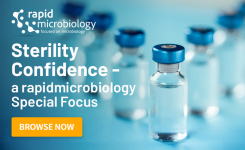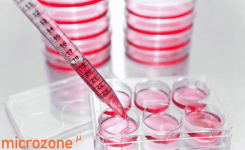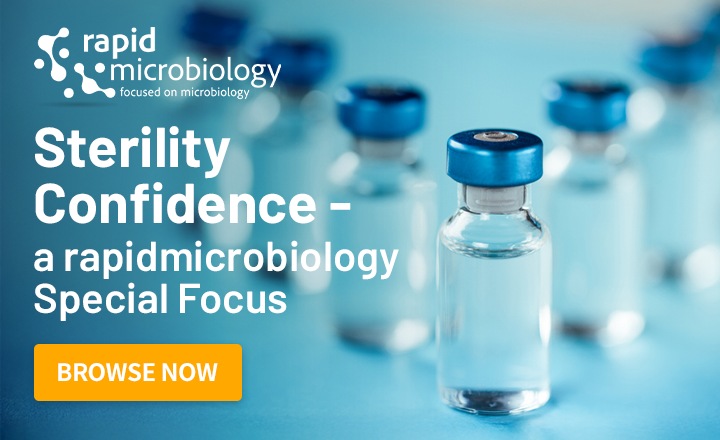Key Points
- Mycoplasmas are common contaminants of cell cultures in the biopharmaceutical industry and some are also clinically important.
- Conventional methods to detect mycoplasma contamination in cell cultures are technically demanding, labour-intensive and take up to five weeks to produce a result.
- Rapid detection methods using PCR and other techniques can achieve dramatic time savings and are ideal for screening cell culture in the laboratory and in industrial processes.
The term ‘mycoplasmas’ is often used as a collective name referring to bacteria belonging to the class Mollicutes, which currently contains four orders, five families and eight genera. Mycoplasma is also the name given to one of those genera. To date, more than 200 known species have been detected in humans and other animals, plants and arthropods. At less than 1.0 µm in diameter, mycoplasmas are considered to be the smallest free-living, self-replicating organisms and also have one of the smallest genomes, consisting of approximately 500 to 1,000 genes. They are highly pleomorphic – lacking a cell wall – and also lack many of the metabolic pathways found in more complex bacteria. For this reason they are fastidious in their growth requirements and can only be cultured in very complex media, enriched with a number of growth factors, such as sterols.
Clinical Significance
About 17 mycoplasma species are associated primarily with humans. Some are considered to be commensals and are usually found in the respiratory or urinogenital tracts, but three species are known to be pathogenic, causing chronic infections. These are Mycoplasma pneumonia, M. genitalium and M. hominis. M. pneumonia causes a chronic form of bacterial pneumonia, which can last for several weeks, but is very rarely fatal, while M. genitalium is a cause of sexually transmitted urinogenital infections in men and women and M. hominis is also associated with urinogenital infections. The involvement of other mycoplasma species in human infection is less clear. There is good evidence that Ureaplasma parvum and Ureaplasma urealyticum are associated with urinogenital infections, but the pathogenicity of some other species, notably M. fermentans and M. penetrans, remains uncertain. It has been proposed that mycoplasmas may be involved in the development of a range of chronic conditions, including rheumatoid arthritis, Crohn’s disease, chronic fatigue syndrome and Gulf War syndrome, but none of these links have yet been proven. There is also evidence that immunocompromised individuals are more vulnerable to mycoplasma infections. Demonstrating the pathogenicity of mycoplasmas is difficult, partly because they are so difficult to culture, but also because they are often present in the respiratory and urogenital tracts as harmless commensals.
Importance in the Biopharmaceutical Industry
Mycoplasmas are a significant problem for the biopharmaceutical industry because they are a very common cause of contamination in cell cultures used in research laboratories and in industrial processes. The bacteria thrive in cell culture media and can reach very high numbers without causing visible changes in the culture, or affecting its viability, and so remaining undetected. However, contamination may cause a range of more subtle changes in affected cell cultures, potentially affecting factors such as cell metabolism and gene expression. There have been a number of studies to determine the prevalence of mycoplasma contamination in cell cultures. Some have estimated that it could be as high as 80%, while studies in the USA suggest a lower contamination rate of 10-15%. An average figure between 25% and 50% worldwide seems quite plausible. This is clearly a very significant problem for the industry and could lead to serious economic losses.
Most cases of cell culture contamination are caused by a group of about six to eight species with human, porcine or bovine hosts, of which M. orale and M. hyorrhinis are the most common. Contamination usually originates from new cell lines, culture media ingredients, or from laboratory staff. The problem was first identified in the 1960s, but remains a serious issue, largely because contamination is so difficult to detect. Mycoplasmas are unaffected by many of the antibiotics that have been used to control bacterial contamination in cell cultures, especially those that affect cell wall formation, such as penicillins. The lack of a cell wall also means that some cells may be able to pass through 0.2 µm filters.
Detection Methods
Clinical Samples It may sometimes be necessary to use laboratory tests to help diagnose mycoplasma infections, especially where M. pneumoniae is suspected, and serological testing of blood samples for both IgM and IgG antibodies is often the preferred method. A number of ELISA-based test kits have been commercialised for this purpose. Direct detection by culturing from clinical samples was considered the reference standard method until recently, although culturing mycoplasmas is difficult and requires specialist media and expertise unlikely to be available outside large medical laboratories. The fastidious nature of mycoplasmas also means that great care must be taken in sample collection and transport to the laboratory if the bacteria are to remain viable. Mycoplasmas can be grown on suitably enriched solid media, producing characteristic ‘fried egg’ colonies. Although a positive result may be apparent within a few days, prolonged incubation is needed to confirm a negative result. For example, a culture to detect M. pneumoniae should be held for 3-4 weeks and incubation times for other species may be even longer.
Because culturing mycoplasmas is so demanding, PCR-based assays for diagnosis of infections have been developed and are now considered the gold standard methods. Although these are rapid and more sensitive than culture-based methods, interpretation of the results can be difficult. PCR may detect DNA from non-viable cells and also from mycoplasmas that have colonised, but not infected, the patient. Nevertheless, PCR assays for mycoplasmas, mainly M. pneumoniae, have been developed commercially. Examples are the BactoReal Mycoplasma pneumoniae real-time PCR kit from Ingenetix and the RealAccurate™ M. pneumoniae + C. pneumoniae Duplex PCR kit from PathoFinder, which is designed to simultaneously detect Mycoplasma pneumoniae and Chlamydophila pneumoniae in respiratory samples. Now that PCR-based mycoplasma detection methods have become more widely available, they are increasingly being used in clinical laboratories.
Cell Cultures
Widespread mycoplasma contamination of cell cultures in the biopharmaceutical industry and the potential economic consequences associated with it have lead to the development of an extensive range of commercial test kits aimed at research laboratories and bioreactor operators.
Regulatory authorities in Europe and North America require that cell cultures used in pharmaceutical production should be free of mycoplasmas, so that testing must be carried out on all cultures at various stages in the production process. For example, the US Food and Drug Administration has published stringent guidelines for mycoplasma testing in cell cultures used for vaccine development. It is also strongly recommended that research laboratories using cell cultures should perform regular tests for mycoplasma contamination, but it is reported that some labs have still not implemented adequate testing regimes.
Prescribed methods for industry are set out in the European Pharmacopeia and in the US Code of Federal Regulations. Two test methods are used - a culture method and an 'Indicator cell culture' test – as not all mycoplasmas can be successfully cultured. The culture method involves inoculating cell culture supernatant into a broth medium, which is then incubated and periodically subcultured onto agar media. The agar cultures are then incubated and examined for mycoplasma colonies. The test takes at least 28 days to produce a negative result. The indicator cell culture test is performed by transferring samples into a Vero cell culture, which is then grown for 3-5 days. The indicator cells are then stained with Hoechst DNA stain and examined under the microscope for surface fluorescence indicative of mycoplasma contamination. Although this method is more rapid than culture, it is less sensitive and still takes several days to complete. When both methods are used together the test can take up to five weeks to complete. It is therefore not surprising that rapid methods have been developed to enable laboratories and manufacturing sites to run screening tests on cell cultures and media for quality assurance and early warning purposes. The great majority of these methods are PCR-based and properly validated PCR-based detection methods are now accepted, or are under consideration, by regulatory authorities around the world as an alternative to conventional methods.
PCR Since there are at least 6-8 common mycoplasma species likely to be present as contaminants in cell cultures, tests need to be able to detect a relatively wide spectrum of species and not be too specific, yet minimise the number of false positive results. Most of the commercially available tests achieve this by targeting sections of the 16S rRNA coding region of the mycoplasma genome at loci that are well conserved in all Mollicutes. The same loci are not well conserved in other bacterial species, thus reducing the chances of a false positive detection. This approach enables some commercially available assays to detect up to 100 species of mycoplasmas, although most are only validated against the species most likely to be found in cells cultures.
PCR assays for mycoplasmas are capable of achieving high sensitivity and some are able to detect just a handful of genome copies in a single assay. The technique is also extremely rapid in comparison with prescribed methods. Stated detection times for commercial test kits range from 2.5 to 5 hours. The main disadvantage remains higher rates of false positives than for culture methods. But the enormous time savings available with PCR-based methods make them ideal for rapid screening of cell cultures, media, raw materials and for monitoring contamination at different points in industrial production processes.
Both endpoint PCR and real-time PCR (RT-PCR) have been used to develop commercial test kits, but there is a trend towards RT-PCR because it can be made quantitative and is capable of greater sensitivity than endpoint PCR. This allows faster detection of low level contamination.
Many PCR-based commercial test kits are aimed at the research market and are designed primarily for monitoring contamination in laboratory cell lines. Examples include the ATCC™ Universal Mycoplasma Detection Kit, which detects over 60 species including the eight most common, and Agilent Technologies MycoSensor RT-PCR assay kit, which claims to detect the eight commonest cell culture contaminant species in less then 2 hours.
Other products are intended for more industrial applications and can be used to monitor raw materials and for industrial process control applications, testing samples at different stages in the manufacturing process, as well as finished products. Examples include Life Technologies' MycoSEQ® Mycoplasma Detection System, capable of detecting up to 90 species in four hours, and the MycoTOOL test developed by Roche, which is validated for 11 mycoplasma species and has been approved by the European Medicines Agency and the FDA for release testing of certain pharmaceutical products.
A rather different approach has been taken by Millipore in the development of the Milliprobe® Real-time Detection System for Mycoplasma. This too is designed for process control applications, but is one of the few systems that does not target the 16S rRNA gene. Instead it targets ribosomal RNA, which is much more abundant in mycoplasma cells than genomic DNA, using Gen-Probe Real-time Transcription Mediated Amplification (TMA) technology. The result is a system validated for 13 mycoplasma species that is able to produce results in less than four hours. The Milliprobe system is semi-automated and includes sample preparation steps so that laboratories lacking high levels of molecular biology expertise can use it.
Other methods Although PCR-based assays are widely available, they not the only option. Other technologies have also been used to develop rapid mycoplasma detection tests.
A number of immunological ELISA-based tests have been developed into commercial products, but these have largely been superseded by PCR-based methods. However, Roche has developed a hybrid Mycoplasma PCR-ELISA assay based on the amplification of a mycoplasma-specific DNA sequence by PCR, and the subsequent detection of the amplicon by ELISA. R&D Systems® MycoProbe® Mycoplasma Detection Kit is another hybrid assay using microplate technology to detect mycoplasmas. It incubates samples with two labelled DNA probes targeting the 16S rRNA gene. The labelled probes are then captured on a microtitre plate and colorimetric detection is then accomplished in a manner similar to ELISA. MycoProbe was developed to combine some of the sensitivity advantages of PCR with the convenience of ELISA and is able to detect the eight commonest species of mycoplasmas within 4.5 hours.
Other technologies developed into commercial products for detecting mycoplasmas in cell cultures include enzyme activity detection by bioluminescence (Lonza MycoAlert® Mycoplasma Detection Kit) and using engineered live cells to detect mycoplasmas in an easy-to-use colorimetric assay (InvivoGen PlasmoTest™).
More on rapidmicrobiology:
1st Rapid Release of ATMPs Prior Treatment for Bacteria and MycoplasmaGo Beyond TaqMan Specificity - Gain Additional Control With Less Work
Automating the Diagnosis of Urogenital Mycoplasma Infections
Rapid Mycoplasma Testing Method Now Accepted by Regulators for QA/QC and Lot Release
Get the latest updates in Rapid Microbiological Test Methods sent to your email? Subscribe to the free rapidmicrobiology eNewsletter
























